The two most common bagpipes in the world are the Scottish and the Irish bagpipes. The Scottish bagpipes are most common and what most people think of when they think of bagpipes. Irish bagpipes look and sound different. What are the differences between Scottish and Irish bagpipes?
The main difference between Irish and Scottish bagpipes is that Irish bagpipes normally have two drones – tenor and bass – while the Scottish bagpipes have an extra drone. Scottish bagpipes are blown by the mouth and Irish bagpipes by inflating the bellows.
There are many varieties of Scottish and Irish bagpipes; for this comparison, we will look at the most popular variety among the two types. For Scottish bagpipes, we will look at the Great Highland Bagpipe. And for the Irish bagpipes, we will look at the Uilleann Bagpipes.
The table below summarizes the main differences between both types of bagpipes:
| Scottish Bagpipes | Irish Bagpipes | |
| Cost (Good Quality) | US$1000+, full set | US$6000+, full set US$600+, student model |
| Main Parts | Blowpipe, bag, drones, chanter | Bellows, bag, drones, chanter, regulators |
| Octaves | 1 + 1 note | 2 |
| Scale | Mixolydian Scale only (and related scales) | Multiple |
| Sound | Loud and percussive | Soft and sweet |
| Playing Position | Standing, Marching | Sitting |
| Air Supply | Blowing Piece | Elbow-pumped bellows |
| Playing Style | Often played in bands, must be synchronized. Usually played outdoors. | Usually played solo. Can be played in bands, synchronization not necessary. Usually played indoors. |
| Production | Usually mass-produced | Usually specially hand-crafted |
The above comparison will help aspiring pipers and beginners when it comes to choosing the right bagpipes. Read on to learn more about the differences between Irish bagpipes and Scottish bagpipes.
Also, we hope you find the links here useful. We may get a commission if you purchase something through a link on this page, so thank you!
Also, for an excellent Scottish bagpipe that is great for beginners, take a look at the AC Kilts Scottish Great Highland Bagpipe. Despite its affordable price, it has an impressive build quality and sound.
Click here to see it on Amazon.
To practice the pipes, you need a practice chanter like the RG Hardie Bagpipe Twist Trap Practice Chanter. This is an excellent practice chanter that comes with a very helpful tutor book as well as reeds.
Click here to see it on Amazon.
Next, let’s look at Scottish Bagpipes, including their specific features.
What Are Scottish Bagpipes?
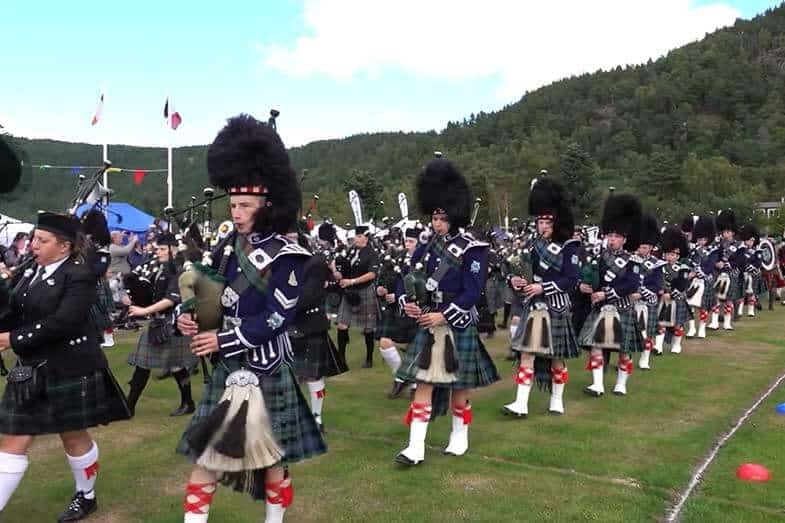
Bagpipes are a huge part of Scottish culture. When many think of bagpipes, they think of Scotland or Scottish pipes playing in the Scottish Highlands.
There’s plenty of bagpipes native to Scotland. Among them, the Great Highland Bagpipe is the most well-known worldwide. When visiting the country, you will always hear the reverberating sounds of these instruments.
They are often played by marching bands in the parks, at parades, and in most events. They also became iconic instruments due to their use in British military bands.
Some evidence shows that Scotland and the British army used Great Highland Bagpipes as early as the 1400s. They also appeared in many European artworks during the 13th century. The instrument later became a necessity for the British army bands. This cemented its popularity and achieved worldwide recognition.
Scottish Great Highland bagpipes are the type of bagpipes that you would most likely see in movies and shows.
Scottish Bagpipes Features
As previously mentioned, we will be focusing on the Great Highland Bagpipes since they are the most common type of bagpipes. Regardless, the differences between the other varieties of Scottish bagpipes are minimal.
The Scottish bagpipe is a woodwind, double-reed instrument. The complete set has a number of parts. The parts are the blow-pipe, the bag, the chanter, and the drones. Let’s look at each of the parts.
The Blowpipe or Blowstick
Scottish bagpipes are played by blowing air using the blow-pipes. Most, if not all, Scottish bagpipe blow-pipes have an airlock mechanism that stops the air from escaping back to the blow stick. The constant blowing of air requires lung endurance.
The Bag
The bag is the most prominent part of the bagpipes. The bag serves as the air reservoir for the instrument. You could also call it the lungs of the bagpipes. Animal skin and hides are common materials for making bags. Sheepskin, cowhide, and goatskin are some examples.
But today, many bagpipe manufacturers venture into making bags from synthetic materials. One example is Gore-tex, a synthetic, waterproof fabric. However, using synthetic fiber has the added risk of fungal spores. For this reason, some bags also have zippers, or something similar, to make cleaning possible.
The air in the bags of the Scottish Bagpipe is compressed using the arms of the piper. The piper must maintain constant blowing while controlling the pressure by compressing the bag. This requires concentration, control, and endurance. When the bag is compressed, the stored air within it passes through the chanter and the drones to produce music.
The Chanter
The chanter is another part of the Scottish bagpipe. It is the melody pipe of the instrument, fitted with a reed. The pipe is also connected to the bag, just like the blow-pipe. The Chanter has a series of finger holes. Its appearance can be compared to flutes. It also works similar to a flute in which you need to use two of your hands to block the holes to produce music. Chanters are often made out of Blackwood and other similar materials.
Chanters can be cylindrical or conical in terms of the internal bore shape. As for Scottish Bagpipes, the chanters are often conical. This contributes to the bagpipe’s iconic loud and percussive sound. On the other hand, cylindrical chanters have a sweeter and quieter tone.
The ends of the Chanters are open. It means that as long as you put pressure on the bag, it will continuously produce sound. For this reason, most, if not all, Scottish bagpipes have a legato sound. It is characterized by having no rest in music.
Despite this, pipers have used a method to circumvent the issue. Technical movements create the illusion of having breaks and control articulation and accents. However, these techniques require years of practice to master.
Great Highland Bagpipes are in Mixolydian mode, a flattened seventh scale degree. The range is one octave, starting from one whole note lower than the tonic scale. In total, the chanter has nine notes. The notes are low G, low A, B, C (sounds as a C♯), D, E, F (sounds as an F♯), high G, and high A.
Due to the limited chromatic notes, Great Highland Bagpipes are in A Mixolydian, D major, B Aeolian, or occasionally E Dorian.
The Drones
Similar to the chanter, the drones have reeds to produce sound. However, the drones do not have finger holes and are not controlled in any way. They produce a constant “humming” sound, a harmonizing note throughout the play. For most Scottish Bagpipes, the drones are also conical. The drones lie over the shoulder of the piper.
The Great Highland Bagpipe has three drones, two tenor drones, and a bass drone. The tenor drones are an octave lower than the chanter’s low A, while the bass drone is two octaves lower.
Click here to see this Scottish Full-Size Bagpipe on Amazon.
See this video, which provides more insight on the differences between Irish and Scottish bagpipes.
Aside from the actual features of the Scottish bagpipes, there are other things you must consider when comparing them with Irish bagpipes.
Two of these considerations are the price and the difficulty of learning the instrument.
As for the price and availability, professional Great Highland Bagpipes cost $1000+ for a complete set. For that price, you can get a good quality bagpipe. There are also cheaper bagpipes, but their quality may also be cheaper. But if you’re a beginner, find a bagpipe with a good balance of quality and price.
See the AC Kilts Scottish Great Highland Bagpipe with Golden Engraved Brass Mounts for a very affordable beginner bagpipe set.
Click here to see it on Amazon.
As for the difficulty, it will help to get a teacher or a mentor. Learning it by self-study is possible but will take more time. Furthermore, the instrument can be very loud. A chanter is essential for learning the bagpipes as it lets you practice fingering at a quieter level.
See the RG Hardie Bagpipe Twist Trap Practice Chanter for an excellent practice chanter that comes with a very helpful tutor book as well as reeds.
Click here to see it on Amazon.
Next, let’s look at Irish bagpipes, including their specific features.
What Are Irish Bagpipes
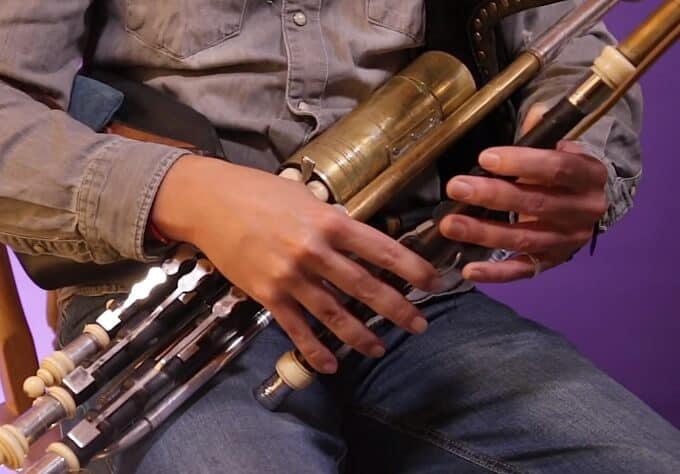
Irish bagpipes are instruments native to Ireland. Like the Scottish Bagpipes, there is more than one variety of Irish Bagpipes. However, there is one variety that is accepted as the main Irish bagpipe. This is none other than the Uilleann Bagpipes. Once called “Union Pipes,” Uilleann Bagpipes is considered the national bagpipe of Ireland. The word “Uilleann” literally means elbow in the Irish language.
There were no records prior to the 20th century as to the use of the term “Uillean Pipes.” The term was coined by Grattan Flood. However, some believe that during the 18th century, they used the name “Union Pipes.” There are many speculations as to why they are called “Union Pipes.” One common belief is that it was played during the Union of England, Wales, Ireland, and Scotland.
Irish Bagpipes Features
There are major differences between the Uilleann Bagpipes and the Great Highland Bagpipes. They differ in appearance, in some of the parts, and as well as the music they produce. Read on to learn more.
The Bellows
Unlike the Great Highland Bagpipes, Uilleann bagpipes use bellows instead of a blowpipe. The bellows are controlled using the elbows, hence the name “elbow pipes.” The bellows are located under the dominant arm.
The Chanter
The chanters of an Irish Bagpipe are different from Scottish Bagpipes. The Uilleann chanters are double-reed and are meant to rest on the pipers’ thighs. Because of this, the Uilleann Bagpipes sound best while sitting down on a chair, instead of standing or marching like the Scottish bagpipes.
Another major difference is the range of chanters. The Scottish bagpipes can only play a single octave, plus a note. The Irish bagpipes are more versatile in this aspect. The Uilleann Bagpipes can play two octaves, including all possible accidentals. Because of the wider scale, there are also more fingering techniques using Irish pipes.
The scale is also a major difference. Scottish pipes are very limited in this area. Meanwhile, Uilleann pipes tuned into different keys. The most common tuning is in the Key of D. Uilleann bagpipes also have “flat sets,” tuned in C♯, C, B, and B♭. The overall tuning of the chanter depends on its length. The D Key tuning is often used in ensembles, while the flat sets are more commonly played solo.
Two more major differences are the internal bore shape and the end of the chanter. Unlike Scottish Bagpipes, Uilleann bagpipes’ internal bore shape is cylindrical. This produces the iconic soft and sweet sound opposite of Scottish bagpipes’ loud and percussive sound.
The end of the Irish Bagpipe chanter is also different. And Unlike the Great Highland Bagpipes, Uilleann pipe chanters can be closed and opened. Because of this, you can play the Irish bagpipes in staccato. By definition, you can play each note sharply detached or separated from the others. Uilleann bagpipes can also produce Vibrato and Tremolo effects.
The Drones
The drones of an Uilleann bagpipe act the same way as their Scottish counterparts. However, a piper can tune the drones. Pipers have the ability to switch them on and off by means of a switch. The switch can be a stop key or a sliding component.
A standard set will have three drones, just like the Scottish ones. The drones include a tenor, a baritone, and a bass drone, tuned to the bottom note of the chanter across three octaves.
The Regulators
A feature unique to Uilleann Bagpipes is the regulators. Standard sets come with three regulators. They are very similar to chanters, also having note holes. Sprung Keys closes the ends of these regulators. They also rest on the piper’s laps. They produce chords, simple melodic and rhythmic accompaniment.
See this video for more on how the Irish bagpipes differ from Scottish bagpipes.
Like the Scottish Bagpipes, it’s also important to consider the availability and price of the Uilleann Bagpipes.
In regards to price, Irish bagpipes are significantly rarer and more expensive than Scottish bagpipes.
Because of the double-reeds in the chanter and other unique features, Uilleann bagpipes can not be mass-produced. Some may try, but this will compromise the sound quality of the product. Because of this, Uilleann bagpipes are marginally more expensive than the common Scottish Bagpipes. One thing to note is that Uilleann bagpipes can be purchased in sets.
A student set, or a practice set, will only cost around $600+ for a good quality one. A practice set only includes the basic parts of an Uilleann Bagpipe. Included in the set are the bag, the chanter, and the bellows. Practice sets are a good entry point for beginners. Students use it to master the control of the bellows and the bag while playing the chanter. Despite its name, advanced pipers still use student sets.
A half set is a next step up. This set includes the drones. Meanwhile, the full set comes with everything, regulators included. The price of each set increases depending on how many parts are included.
Scottish and Irish Bagpipes Pros and Cons
To summarize it all and add more information about the Scottish bagpipes and Irish Bagpipes, here are the pros and cons that you can review.
Pros of Scottish Bagpipes
- It’s easier to find Scottish Bagpipes and they cost relatively cheaper than Irish Bagpipes
- Learning is easier because it’s the most well-known bagpipe, along with a great community.
- They are very easy to tune and easy to play once you get the hang of it.
- Perfect for people who love large parades and loud and percussive music.
Cons of Scottish Bagpipes
- Limited scale and can only play one octave
- When played with a band pipe, every piper must play exactly as the others
- Playing the bagpipes, especially the blowing part, will require practice and lung endurance.
- Because of it is loud and percussive, practice space is necessary.
Pros of Irish Bagpipes
- Playing the pipes require less physical exertion.
- Can play multiple scales and two octaves offering freedom when playing
- They have regulators which can add more color to the music
- Despite the multiple scales and octaves, chanter finger techniques are often easier.
- Best for people who like soft and sweet music played indoors
Cons of Irish Bagpipes
- More expensive than the Scotting Bagpipes
- More sensitive and high maintenance
- They are very rare which makes it hard to find a mentor or online guides
- They are longer to get used to when it comes to tuning, fingering, and air control.
Conclusion – What Are the Differences Between Irish Bagpipes and Scottish Bagpipes?
So what are the differences between Irish bagpipes and Scottish bagpipes? Scottish bagpipes and Irish bagpipes are very different. Scottish bagpipes, especially Great Highland Bagpipes, are more common than Irish pipes. They are cheaper and are easier to learn. They are perfect for people who love loud music and parades. However, compared to their Irish counterparts, the music they can play is limited.
On the other hand, the Irish Bagpipes, particularly the Uilleann bagpipes, are more versatile. They can play a wider range of music due to their wider scale and more octave range. Uilleann Bagpipes are also best suited for people who love sweet and soft music. They also require less physical exertion than their Scottish counterparts. However, Uilleann bagpipes are significantly more expensive and are high-maintenance musical instruments.
In any case, both of the instruments are awesome. Whether you choose the Scottish bagpipes or the Irish bagpipes, you can be sure that you will produce good music with them. However, you will need a teacher or a mentor for both of these instruments to master them fully.
Related reading:






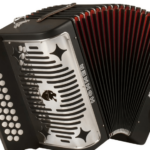
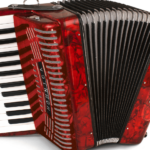




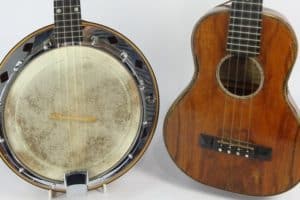
![Read more about the article How to Tune a Banjo? [5-String and 4-String Banjo Tuning]](https://musicalinstrumentpro.com/wp-content/uploads/2021/01/how-to-tune-a-banjo-300x200.jpg)